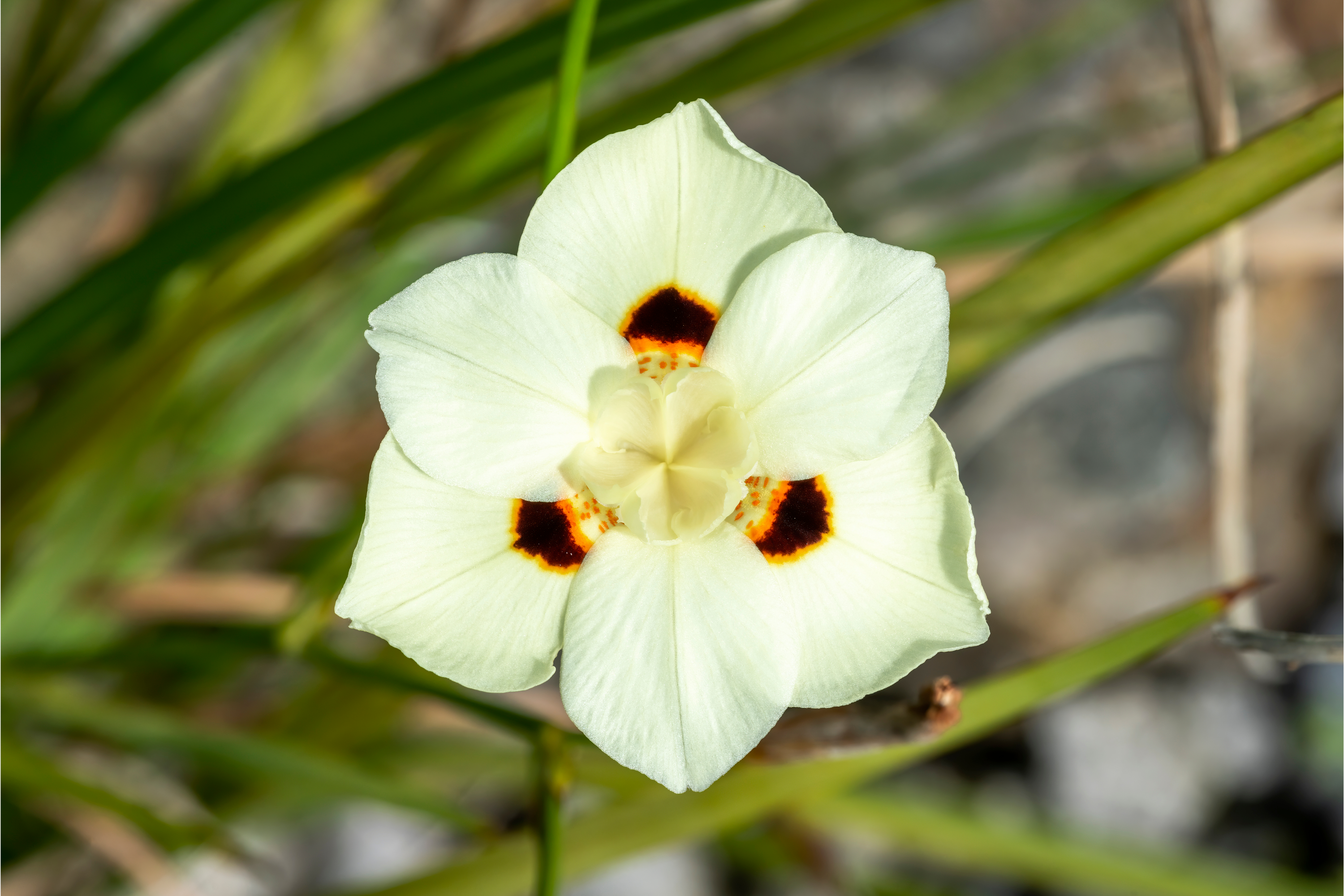African iris
(Dietes bicolor)

Description
Dietes bicolor, commonly known as African iris or butterfly iris, is a perennial plant species belonging to the family Iridaceae. It is native to southern Africa and is widely cultivated as an ornamental plant in many parts of the world due to its attractive flowers and foliage. Taxonomy and Nomenclature Dietes bicolor was first described by the German botanist, Augustin Pyramus de Candolle, in 1808. The genus name Dietes is derived from the Greek word ‘dis’, meaning two, and ‘etes’, meaning companion or partner, referring to the two types of leaves on the plant. The species epithet bicolor is derived from the Latin words ‘bi’, meaning two, and ‘color’, meaning color, referring to the two-colored flowers of the plant. Description Dietes bicolor is an evergreen perennial plant that grows up to 1.5 m tall and 0.5 m wide. The plant forms a clump of long, narrow, sword-shaped leaves that grow up to 1 m long and 2 cm wide. The leaves are arranged in two rows, with the outer row of leaves usually shorter and wider than the inner row of leaves. The plant produces flowers on tall, slender stalks that rise above the foliage. The flowers are borne in clusters and are characterized by their intricate, three-dimensional structure. Each flower has six petals, with the outer three being large and white, and the inner three being small and yellow. The flowers are also adorned with purple, brown or black markings that add to their beauty. The flowers bloom from spring to fall, with the peak bloom period occurring in mid-summer. Cultivation Dietes bicolor is a hardy plant that is easy to grow and care for. It prefers well-drained soil and full sun to partial shade. The plant is tolerant of drought, heat, and frost, making it an ideal choice for gardeners in many parts of the world. Propagation Dietes bicolor can be propagated by seed, division, or cuttings. Seeds should be sown in spring, either indoors or outdoors, and will germinate within 2-3 weeks. Division is best done in spring or autumn, when the plant is not actively growing. Cuttings can be taken from the base of the plant in spring or summer and should be placed in a well-draining soil mix. Uses Dietes bicolor is primarily used as an ornamental plant in gardens and landscapes. It is often used as a border plant, a ground cover, or a specimen plant in mixed borders. The plant is also used in mass plantings and in containers. The plant is also used in traditional medicine in southern Africa to treat a variety of ailments, including eye infections, stomach problems, and headaches. The leaves are boiled to make a tea that is then used as a remedy. In addition, the plant has several other uses. The leaves of the plant are used to make baskets and hats, and the fiber from the leaves is used to make rope and string. The dried flowers are also used in floral arrangements and wreaths. Pests and Diseases Dietes bicolor is generally free from pests and diseases. However, it may occasionally be affected by spider mites, mealybugs, or scale insects. These pests can be controlled with insecticidal soap or horticultural oil. Conclusion Dietes bicolor is a beautiful and versatile plant that is popular with gardeners and landscapers around the world. Its attractive flowers and foliage, combined with its hardiness and ease of cultivation, make it an ideal choice for a wide range of garden situations.
Taxonomic tree:







